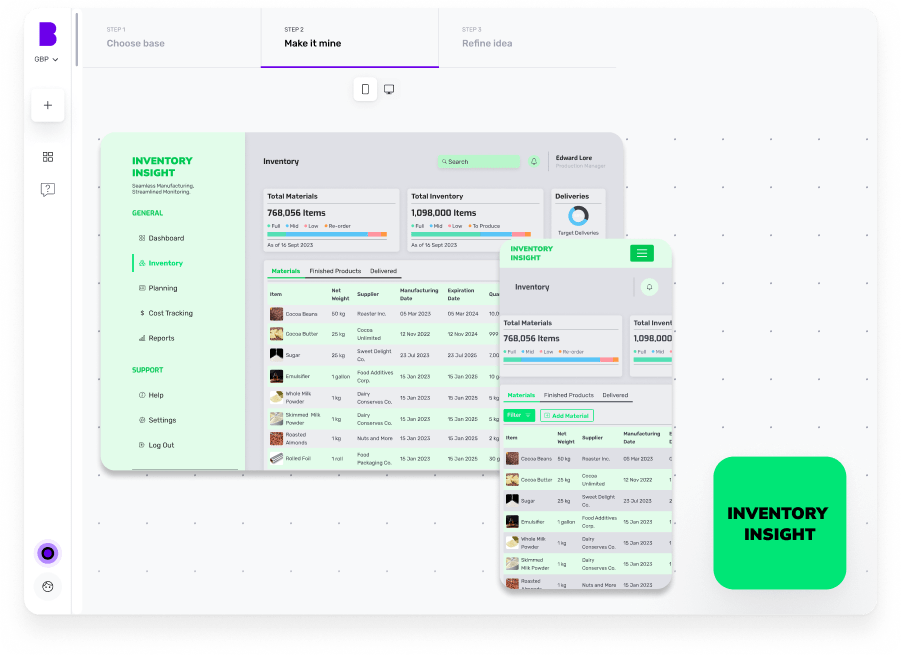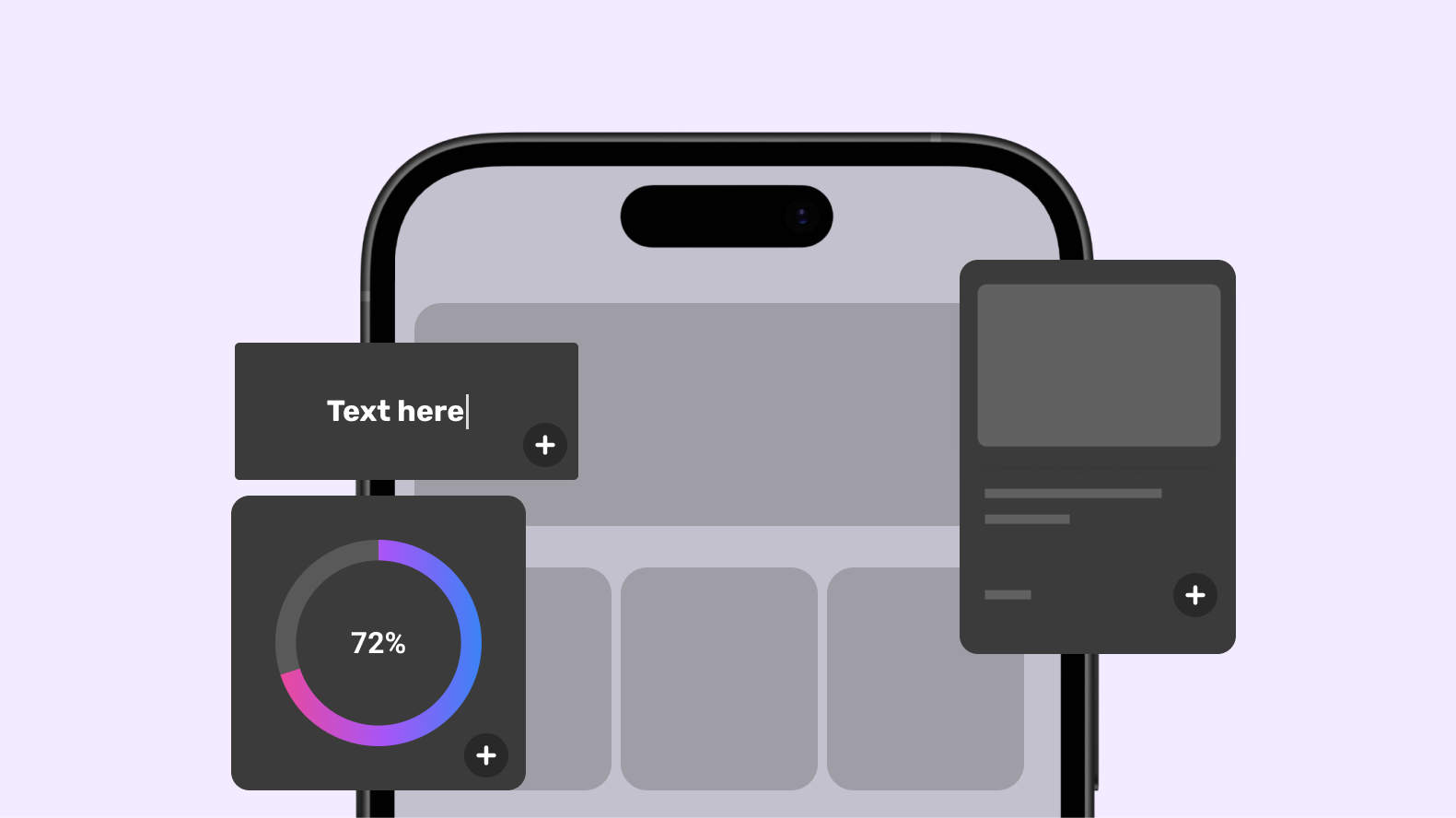Imagine an app experience that feels like it was tailored just for you. That’s the power of app personalisation. App personalisation is no longer just a “nice-to-have” feature, but table stakes for success.
This is because users today expect a customised experience that speaks directly to their needs and preferences. And if your app doesn’t deliver, you risk losing their interest — fast.
Whether you’re a business owner or a marketer looking to boost engagement, app personalisation is a must-have for your business, especially since your customers are already expecting it.
In this guide, we’ll break down what app personalisation really means, why it’s important for your app and how you can start personalising your app for a standout user experience (UX).
Let’s dive in 👇
What is app personalisation?
App personalisation is the process of tailoring a mobile app’s content, design and features to provide a customised user experience to each user. This approach not onlyincreases app user engagement but also increases loyalty and satisfaction, as customers feel more connected to your app as it “understands” them.
This process goes beyond app design and digs deep into user behaviour. But app personalisation can only be done effectively if you have the correct customer data. You need data such as demographics, location, usage patterns, preferences and other relevant data points to deliver a unique in-app experience.
A great example of app personalisation is Netflix recommending shows based on your viewing history. Similarly, Amazon recommends products based on your shopping patterns and behaviour.
Benefits of mobile app personalisation
Now that you know what mobile app personalisation is, let's talk about why it's good for your business.
1 - Better user experience
According to Accenture, 75% of consumers are more likely to buy from a retailer that provides them with a better user experience. App personalisation does just that. It significantly improves the customer experience within your app.
When executed effectively, app personalisation ensures that your customers no longer spend time searching for the content they desire. Instead, relevant content is delivered directly to them through tailored notifications. This not only saves time but also makes sure that customers receive exactly what they want.
2 - Improves user retention and engagement
Personalisation gives your users a strong incentive to keep coming back to your app after they’ve downloaded it.
By offering content and features tailored to their preferences, you create a reason for them to return frequently, which greatly boosts customer retention and engagement.
Infact, Google found that 63% of users are more likely to engage with businesses and brands that make personalised recommendations.
3 - More in-app conversions
According to Google, 89% of marketers believe that personalisation has resulted in an increase in revenue. By providing personalised offers and discounts, you can increase your conversions. This is because the offer is based on customer data, which makes it more appealing, making users more likely to opt for it.
4 - Increases customer loyalty
When you start working on improving the customer experience using personalisation, they’ll have greater brand loyalty. Plus, when customers become loyal to your brand, they’re more likely to provide positive reviews of your app on app stores.
As per a report by Segment, 60% of customers say they’ll become repeat buyers after a personalised shopping experience with a retailer.
5 - Help app stand out
Today, there are more than 5 million apps both on Android Play Store and Apple's App Store combined. With so many apps out there, app personalisation provides you with an edge over your competitors and becomes a key differentiating factor.
App personalisation provides your users with another reason to choose your app over your competition.
Types of mobile app personalisation
There are different types of mobile app personalisation you can include in your app that can significantly enhance user engagement and retention 👇
1 - Personalisation for improved usability
Personalising an app to improve usability makes sure that each user can interact with the app seamlessly that enhances their overall experience. This type of personalisation makes it easy for users to find the features they use often.
For example, if a fitness app knows a user frequently tracks their running stats, it could make those stats easily accessible on the Home screen. It saves users time, reduces friction and keeps them engaged with the app because it feels intuitive and relevant to them.
Usability-focused personalisation can be a game-changer. This is because when users find an app easy to navigate, they’re more likely to spend time on it and engage with its features. This, in turn, leads to improved retention and a greater likelihood of positive reviews.
2. Personalised reminders
Reminders are a key element of personalisation, especially for health, travel, productivity or ecommerce apps. Personalised reminders can nudge users to complete unfinished actions, such as workout routines, book tickets, daily tasks or cart checkouts.
For instance, for a meditation app you might send a reminder to users who haven’t meditated in a few days. These reminders provide value by helping users stay on track with their goals.
Personalised reminders offer a direct way to re-engage users and reduce churn. Rather than sending generic alerts, these reminders are aligned with each user’s preferences, making them feel helpful rather than intrusive. Plus, well-timed reminders increase the likelihood of conversions, as they encourage users to return to the app and complete desired actions.
3 - Motivation-based personalisation
Motivation can be a powerful tool in keeping users engaged, especially for self-improvement, fitness, education or productivity apps. Motivation-based personalisation includes tailored goal-setting features and progress tracking based on a user’s activity.
For example, your fitness app can send personalised messages, like, “You’ve completed 5 workouts this week!” And can suggest achievable next steps to help users stay motivated. Motivation features can also take the form of rewards or badges that recognise users’ achievements and progress.
This type of personalisation has a lasting impact on user loyalty. This is because by aligning with users’ personal goals and offering regular encouragement, you create a relationship that goes beyond utility. Your app users are more likely to return because the app not only serves their needs but actively supports their personal development.
How to personalise your app?
It’s a given that personalisation is important — but when it’s time to implement it, you can be easily overwhelmed. Here’s a 5-step process you need to follow to implement personalisation to your app.
1 - Identify and gather the right data
The foundation of personalisation is data. Begin by deciding what user information you’ll need to create meaningful personalised experiences. This could include:
- Demographic information
- Purchase history
- Location
- Specific interests
For instance, if your goal is to provide tailored shopping recommendations, tracking purchase history will be essential.
Once you’ve pinpointed the data you need, focus on gathering it ethically and organising it for easy use.
2 - Prioritise privacy and transparency
Personalisation is a powerful tool, but it’s important to maintain user trust. You must respect users' privacy by being clear about what data you collect, why and how it will improve their experience.
It’s important that you avoid invasive practices, like sending location-based alerts without consent. Being transparent and compliant with data privacy laws (such as GDPR or CCPA) builds a foundation of trust and helps users feel comfortable sharing their information.
3 - Create personalised in-app experiences
You can do in-app personalisation by using in-app elements like product suggestions, exclusive offers and customised messages to engage users. Focusing on simple touches, like addressing users by name, are a good start, but more sophisticated personalisation can make a bigger impact.
For instance, display relevant content based on a user’s location, browsing history or activity within the app. This approach makes the app feel tailored to each user and increases user engagement.
4 - Engage with alerts and push notifications
Push notifications are a great way to re-engage users and reduce cart abandonment rates. You can send updates about restocks, flash sales or exclusive deals that align with user interests.
However, it's important to keep notifications timely and relevant. Overloading users with too many notifications can backfire, leading to frustration and turning them off. A balanced approach makes sure your users stay engaged without feeling overwhelmed.
5 - Experiment and optimise
Personalisation is an ongoing process that requires regular refinement. Implement A/B testing to determine what types of personalised content, notifications and in-app messages resonate most with your audience.
Taking user feedback seriously and continuously optimising allows you to adapt to their changing needs and create an app experience that's engaging.
Mobile app personalisation strategies
1 - Content personalisation
Customising in-app content is a great way to increase relevance and engagement. By analysing data like user interests, browsing habits or past interactions, you can serve content that resonates deeply with each user.
Content personalisation can increase time spent in-app. For instance, streaming services like Netflix use this approach to recommend shows or movies, which keeps users coming back for more.
2 - Behavioural personalisation
Personalising based on user behaviour allows you to adjust the app experience to meet the evolving needs of each user. This can mean offering product recommendations based on past purchases or displaying reminders for actions they tend to perform.
Behavioural personalisation can lead to higher conversions, as users are more likely to engage with features and content tailored to their interests. This form of personalisation builds a sense of “app intelligence,” where users feel understood by the platform.
3 - Location-based personalisation
Location-based personalisation can be a game-changer for travel or hospitality apps. By accessing GPS or location data, your app can offer relevant services and discounts specific to where the user is.
For example, a food delivery app might show popular options available nearby or offer discounts from local vendors. This type of personalisation enhances convenience and can improve user satisfaction by delivering highly relevant, location-specific content at the right time.
4 - Push notification personalisation
Personalised push notifications allow you to re-engage users with content that's meaningful to them. Sending messages based on user behaviour or even time zones ensures notifications aren't only relevant but also timely.
For example, a fitness app could send motivational reminders in the morning to users who usually work out then. Personalised push notifications help reduce the risk of app abandonment and increase engagement rates by reminding users of the app’s value in their lives.
5 - In-app messaging personalisation
In-app messages can be personalised to deliver tailored experiences, guide users or highlight offers. This could be a welcome message for new users, special discounts for long-time users or guidance to help users complete a certain action.
Personalised in-app messaging increases user satisfaction by addressing specific needs or goals, ultimately encouraging users to explore the app more deeply.
Conclusion
It’s a no-brainer that app personalisation can help your business create a more engaging, relevant and satisfying user experience.
However, it’s a lot of work and getting it right can be challenging as it requires a deep understanding of user data, behaviour patterns and seamless integration of custom features.
This is where Builder.ai can help.
With Builder.ai, you can simplify this process and unlock the power of personalisation with ease. We offer expertise in building and customising apps tailored to your users' unique needs.
If you’re ready to take the next step, click the banner below to start your app personalisation project today 👇
Create robust custom software today
100s of businesses trust us to help them scale.
Book a demoBy proceeding you agree to Builder.ai’s privacy policy
and terms and conditions

Gaurav is the SEO Content Writer at Builder.ai. Being an Engineer and Marketing MBA, he has a knack for converting technical jargon into marketing content. He has 8+ years of experience creating content and designing marketing campaigns that drive organic growth for B2B companies and tech startups.










 Facebook
Facebook X
X LinkedIn
LinkedIn YouTube
YouTube Instagram
Instagram RSS
RSS


